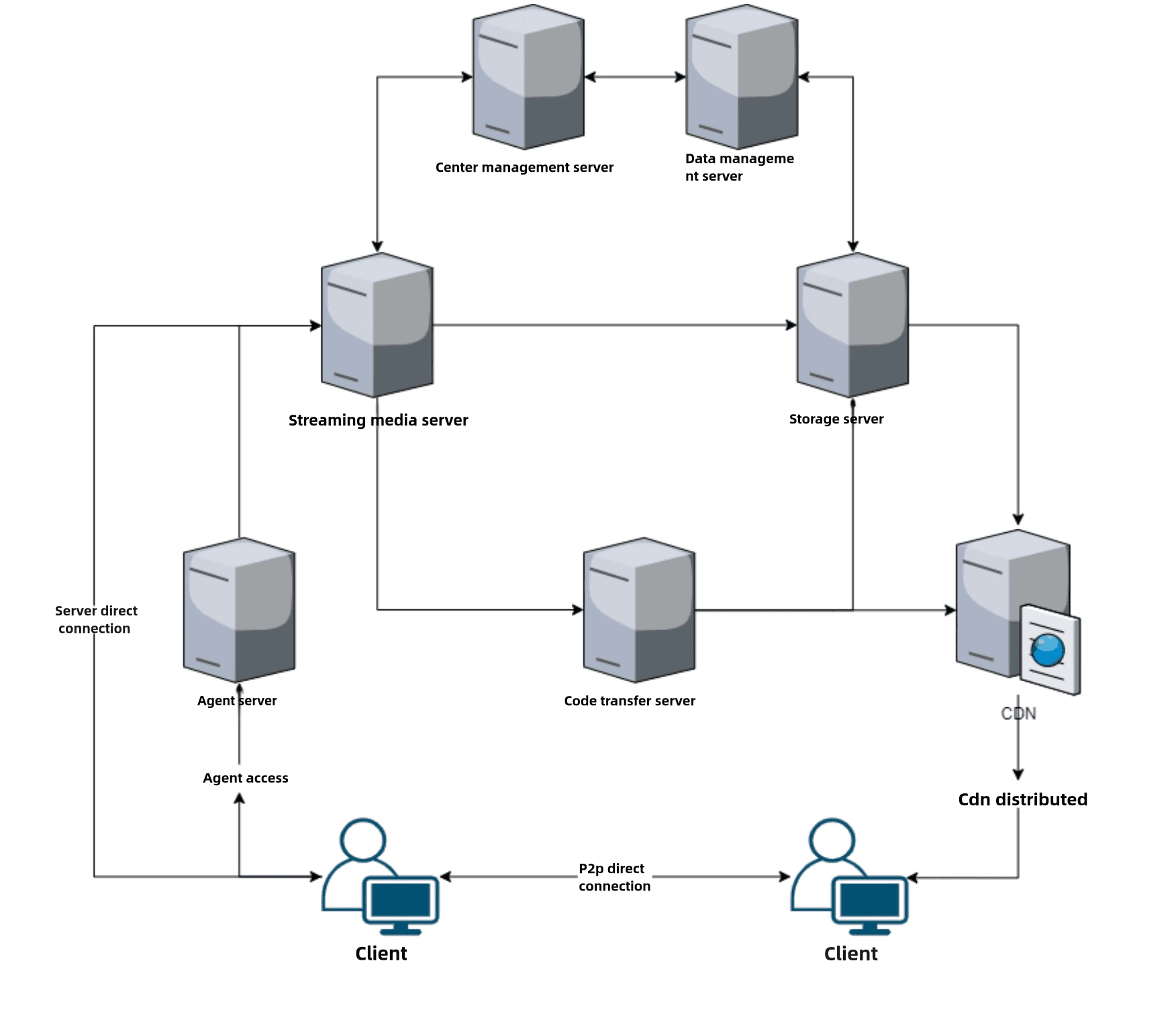In the rapidly evolving world of digital media, streaming services have become an integral part of our daily lives. From video-on-demand platforms to live sports broadcasts, the technology behind these services is complex and fascinating. This blog post will delve into the general architecture of streaming media services, focusing on two key components: the Media Server and the Signaling Server.
The Two Flows of Streaming Media
Streaming media services typically involve two main types of information flow:
- Media Data: This includes audio and video data - the actual content being streamed.
- Signaling Data: This is used for control, management, and work scheduling.
Let's explore the servers responsible for handling these flows.
1. Media Server
The Media Server is specialized hardware designed to process streaming media data. Its primary functions include:
- Replication of media streams
- Forwarding streams to appropriate destinations
- Transcoding (converting between different formats or codecs)
- Separating audio and video streams
- Recording streams
Workflow of a Media Server
- Input: The client device captures, encodes, and packages the media data into files.
- Transmission: These files are then pushed to the Media Server using a streaming protocol.
- Processing: Upon receiving the data, the Media Server may perform various operations:
- Protocol conversion
- Container format conversion
- Codec conversion (transcoding)
- Output: The processed data is then pushed to:
- Client devices
- Content Delivery Networks (CDNs)
- Storage servers
2. Signaling Server
The Signaling Server manages the control information (signals) that coordinates the various components and devices in the streaming ecosystem.
Understanding Signaling
Signaling data is distinct from media data. While media data is the content itself, signaling data is the information used to operate on that content.
Example: A Phone Call
Let's use a phone call between Alice and Bob to illustrate signaling:
- Alice's phone sends a "call" signal to the carrier.
- The carrier signals Bob's phone to ring and sends a "ringing" signal back to Alice.
- If Bob answers, Alice receives an "answer" signal, and they can exchange voice data.
- If Bob hangs up, Alice receives a "disconnect" signal, terminating the call and stopping the voice data exchange.
Role in Streaming Systems
In streaming media systems, various components need to exchange control information. This necessitates several specialized servers:
- Central Management Server: Coordinates the work of all services
- Data Management Server: Manages data-related operations
- Access Server: Facilitates client connections and data forwarding
- Proxy Server: Enables cross-network transmission
The Big Picture
Here's a simplified diagram of a typical streaming media service architecture:

In this diagram, we can see how the various components interact:
- Client Devices: End-users' devices that capture or consume media
- Proxy Server: Handles client connections and forwards requests
- Media Server: Processes and routes media streams
- Transcoding Server: Converts media between different formats
- Storage Server: Stores media for on-demand access
- CDN: Distributes content closer to end-users for faster access
- Central Management Server: Oversees the entire system
- Data Management Server: Handles data-related operations
Conclusion
The architecture of streaming media services is a complex interplay of various specialized components. By understanding the roles of the Media Server and the Signaling Server, as well as the overall system architecture, we can appreciate the intricate technology that allows us to enjoy seamless streaming experiences.
As streaming technology continues to evolve, this architecture will likely become even more sophisticated, enabling higher quality, lower latency, and more interactive streaming experiences.